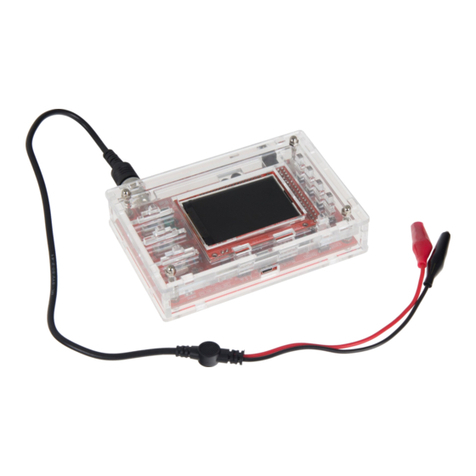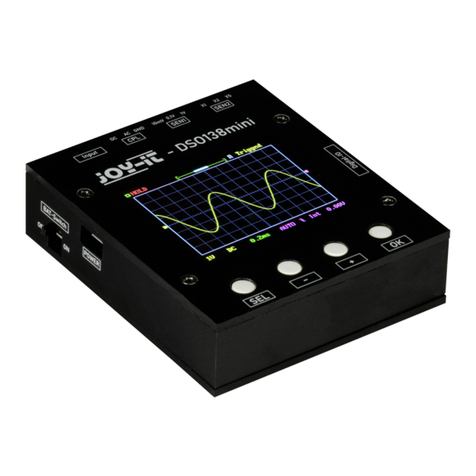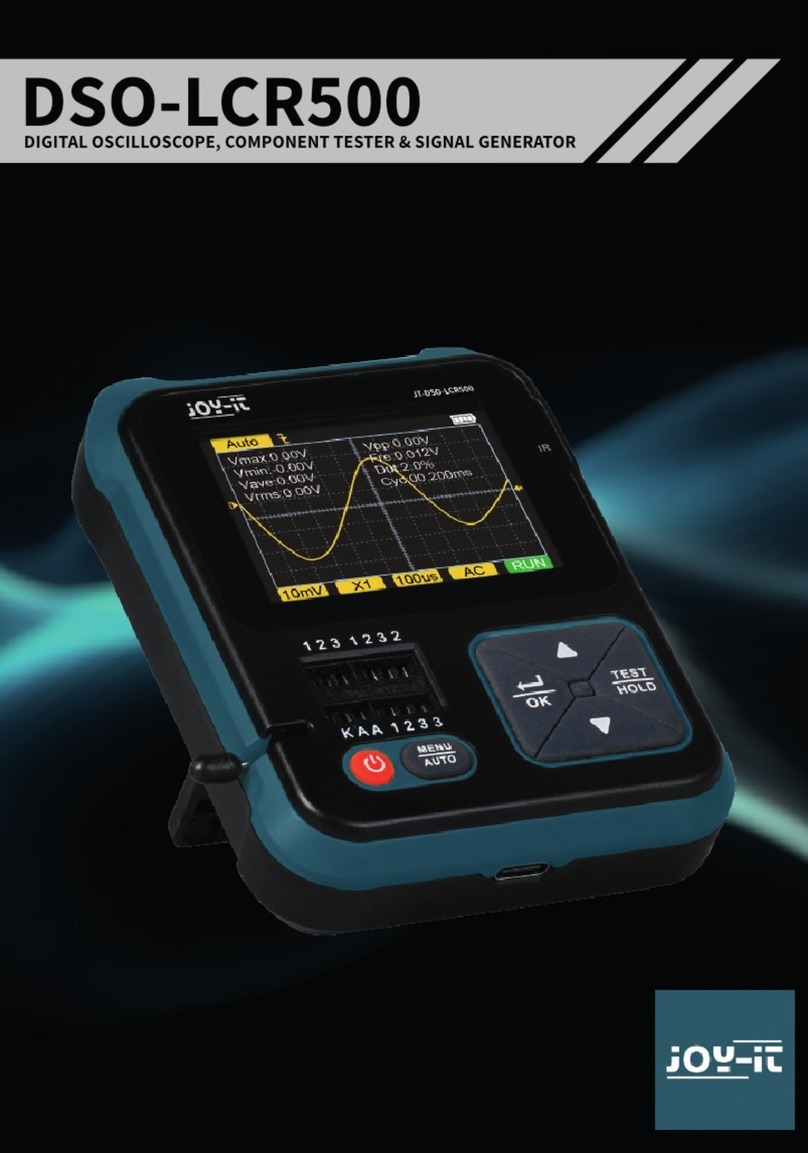
All other conguration options can be set using the buttons below the
display:
THE FOLLOWING CONFIGURATIONS CAN BE MADE:
DISPLAY MODE
The active mode can be set between Running and Hold. Running describes
the normal measuring mode. Hold pauses the current measurement at the
current time. The display mode can be changed with the OK key.
TIMEBASE
The time base can be set between 0.1 s, 0.2 s, 50 ms, 20 ms, 10 ms, 5 ms, 2
ms, 1 ms, 0.5 ms, 0.2 ms, 0.1 ms, 50 µs, 20 µs and 10 µs and indicates the
horizontal resolution.
To set the time base, the time base must rst be selected via the SEL key.
Aerwards, the time base can be set to the corresponding value via the "-"
key and the "+" key.
TRIGGERMODUS
The trigger mode can be set between Auto, Normal and Single and describes
when a measurement sequence is triggered. In Auto mode, the recording is
executed permanently. In Normal mode, the recording is held as soon as no
trigger signal is present. In Single mode, the recording is held immediately
as soon as a trigger signal is detected.
To set the trigger mode, the trigger mode must rst be selected via the SEL
key. Aerwards, the mode can be set to the corresponding mode via the "-"
key and the "+" key.
RISING/FALLING EDGE
The signal is triggered by an edge. The measuring sequence can be triggered
either by a rising or a falling edge.
To set the edge, the edge mode must rst be selected via the SEL key. Then
the mode can be set to the corresponding mode via the "-" key and the "+"
key.
SHOW/HIDE MEASUREMENT VALUES
Additionally, it is possible to show or hide the measured values, such as the
frequency or the voltage values. To do so, press and hold the OK key for
three seconds.































